How college admissions have changed in the last 80 years
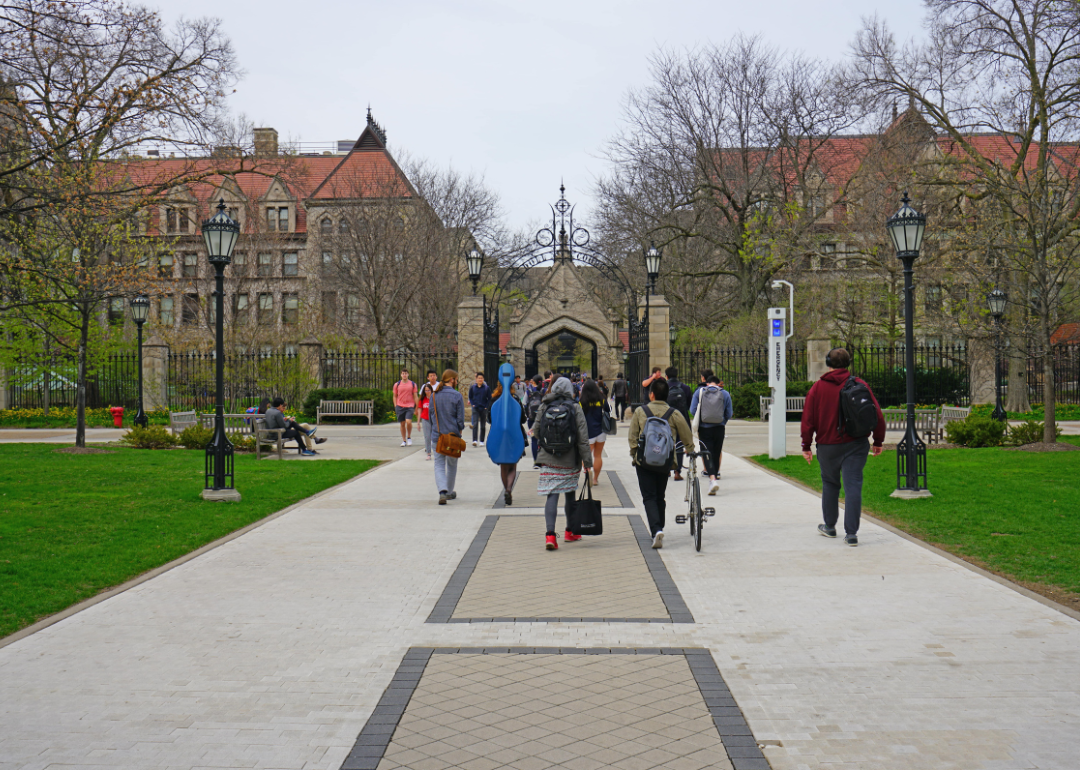
EQRoy // Shutterstock
How college admissions have changed over the past 75 years
The Gothic campus of the University of Chicago.
On June 29, 2023, the Supreme Court ruled in two cases—regarding Harvard and the University of North Carolina’s admissions practices—that using race as a factor for college admission violates the 14th Amendment Equal Protection Clause. This 6-3 ruling, falling along ideological lines, ends race-based affirmative action in higher education and is expected to affect college admissions policies nationwide.
To illustrate the ever-changing pathways to higher education, Stacker reviewed historical milestones and education statistics of the last 80 years.
For a long time, attending college was only possible for a statistically few young Americans. College applicants in the 1800s typically needed to be well-versed in such subjects as Latin, Greek, history, and mathematics—not to mention having the means to pay tuition. Colleges were segregated by race and gender, and students often attended a school associated with their religious affiliation.
By the early 1900s, some schools had adopted entrance examinations that required essays and standardized tests, and some students submitted letters of recommendation and sat for interviews. 1944 was also of key importance, having introduced the G.I. Bill, opening education to the veterans returning from World War II.
To keep pace with the competitiveness of college admissions today, the College Board recommends students submit between five and eight college applications to make sure they are accepted to at least one school. Keep reading to see how the college admissions process has changed over the years.
![]()
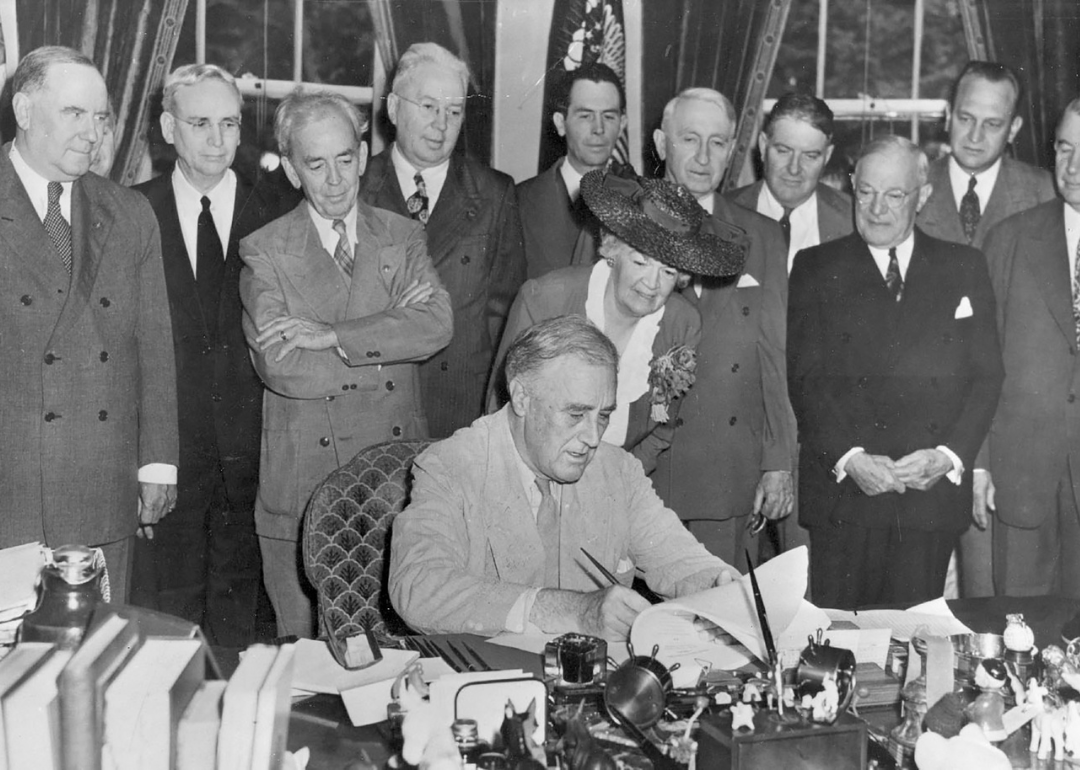
HUM Images // Getty Images
1944: GI Bill supports higher education access for veterans
President Franklin Roosevelt signing the GI Bill of Rights
The G.I. Bill opened up educational benefits to veterans other than those who had been disabled. When it became law in 1944, honorably discharged World War II veterans—those who had served after Sept. 16, 1940—were eligible for authorized benefits. Those included four-year college programs, retraining courses, and refresher classes. A 1945 government report on veterans who wanted to further their education found that of the 83,016 who applied for benefits, 75,272 were deemed eligible. Among them, 35,044 entered courses, and 22,335 were in training.
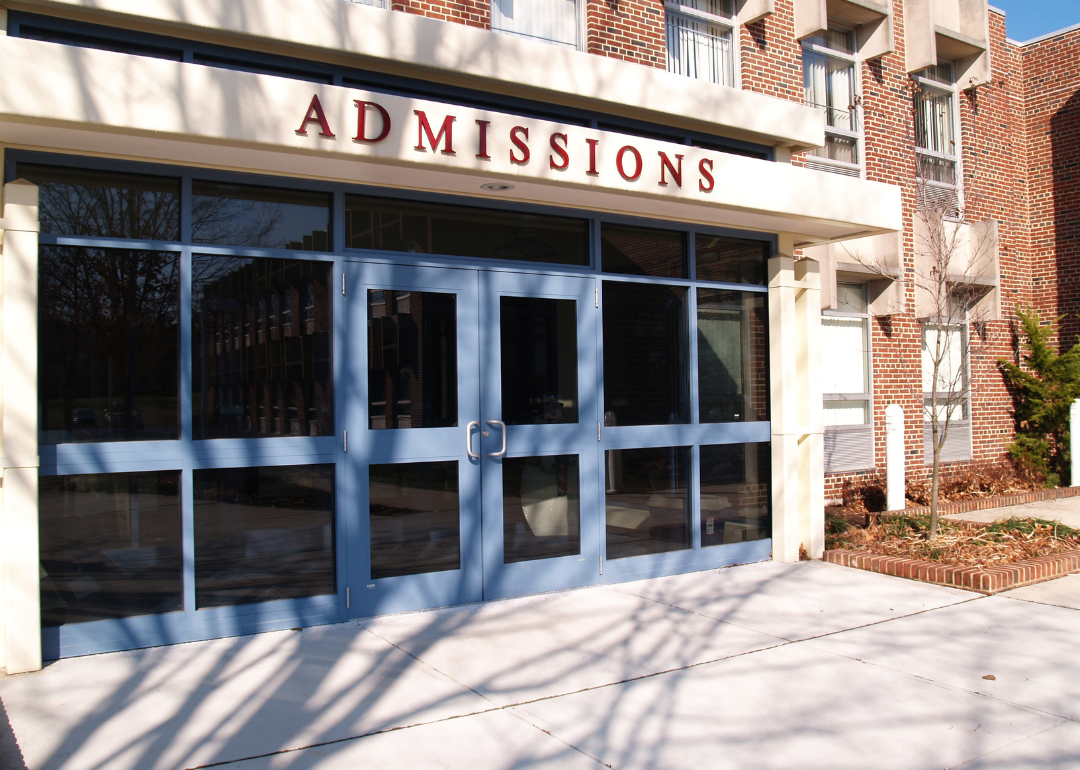
Cynthia Farmer // Shutterstock
1950s: Colleges begin using early admission
The exterior of a college admissions building
Colleges can offer different types of early admission for students. An early decision is binding, and an accepted student must attend the college.
Early action is not binding. The precursor of early admission can be found in the elite schools in New England. An article in The Atlantic detailed how admissions officers from Harvard, Yale, and Princeton visited the area’s prep schools to give students A, B, or C ratings indicating whether they would be accepted. To compete for those students, the smaller schools of the region—Wesleyan, Williams, Dartmouth, Bowdoin, and Amherst—began offering students something similar to today’s early admission in return for a commitment to attend.
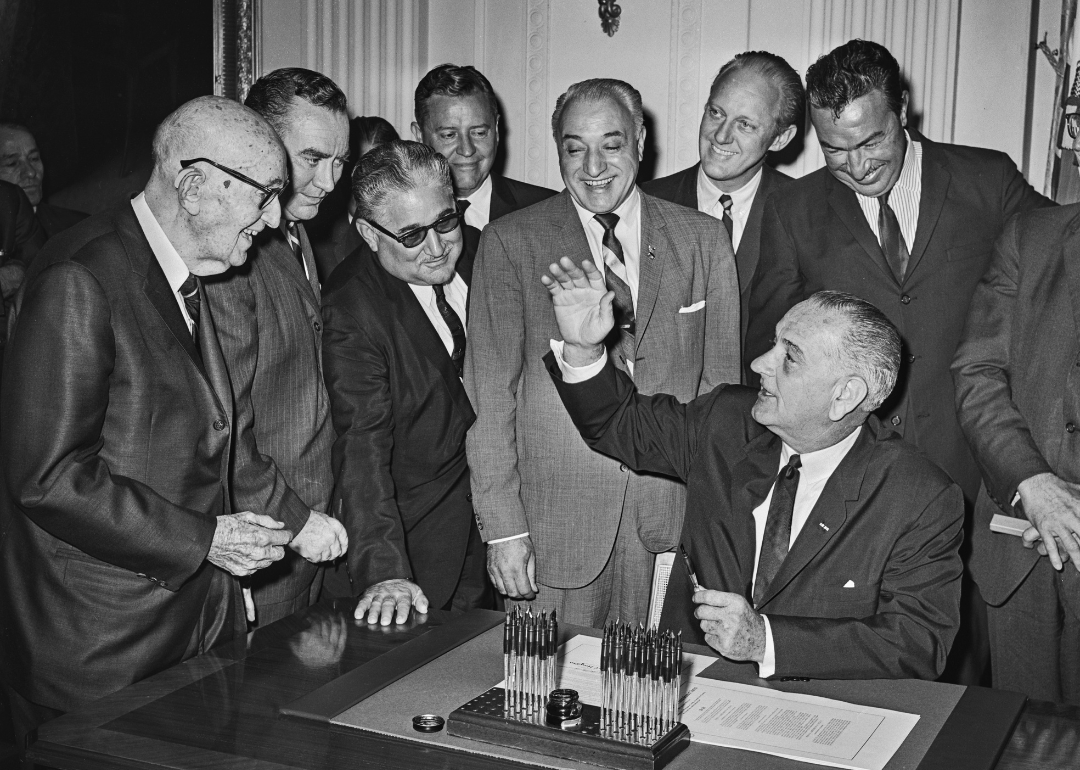
Archive Photos // Getty Images
1958: National Defense Education Act creates federal scholarships to increase STEM research
US President Lyndon B. Johnson signing the National Defense Education Acth
The Soviet launch of the first satellite Sputnik spurred the passage of the National Defense Education Act when Congress became concerned about whether the country’s educational system would meet its defense needs. The act appropriated $1 billion over seven years to support the teaching of mathematics, science, and modern foreign languages. Students who hoped to become mathematicians, engineers, and scientists were eligible for loans and fellowships.
Spurred by Congress, scientists explored how to improve the teaching of physics, chemistry, and other sciences in high school. A Smithsonian magazine article found that Russia educated more women in science and engineering during the Soviet regime. It reported that between 1962 and 1964, 40% of the Union of Soviet Socialist Republics’ chemistry doctorate degrees went to women. The number in the United States was 5%.
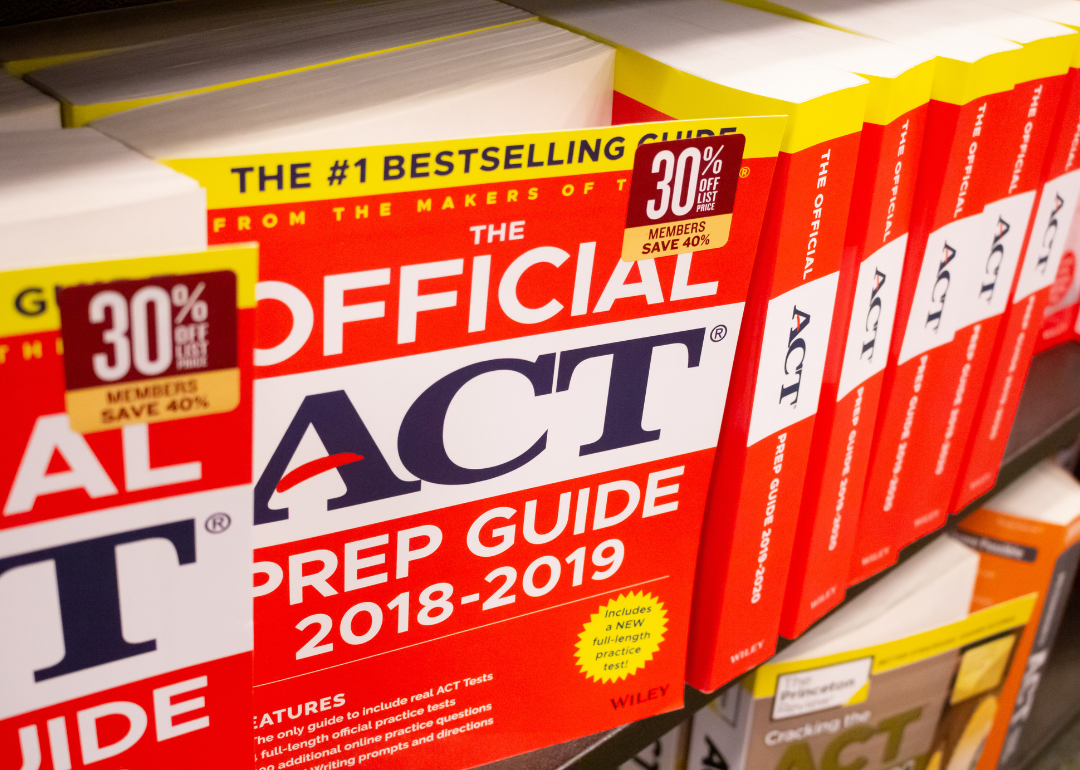
The Image Party // Shutterstock
1959: The American College Testing Program is created
ACT prep books
The American College Testing Program, or ACT, was first given in November 1959. Two years later, it was administered in all 50 states. Based on curriculum and standards, the exam is intended to determine a student’s academic readiness for college or a career.
Students in the 11th and 12th grades are assessed in English, reading, mathematics, and science with scores that can be reported to colleges for admissions purposes. A writing section is optional. Today, the test is taken by the majority of high school graduates in 32 states.
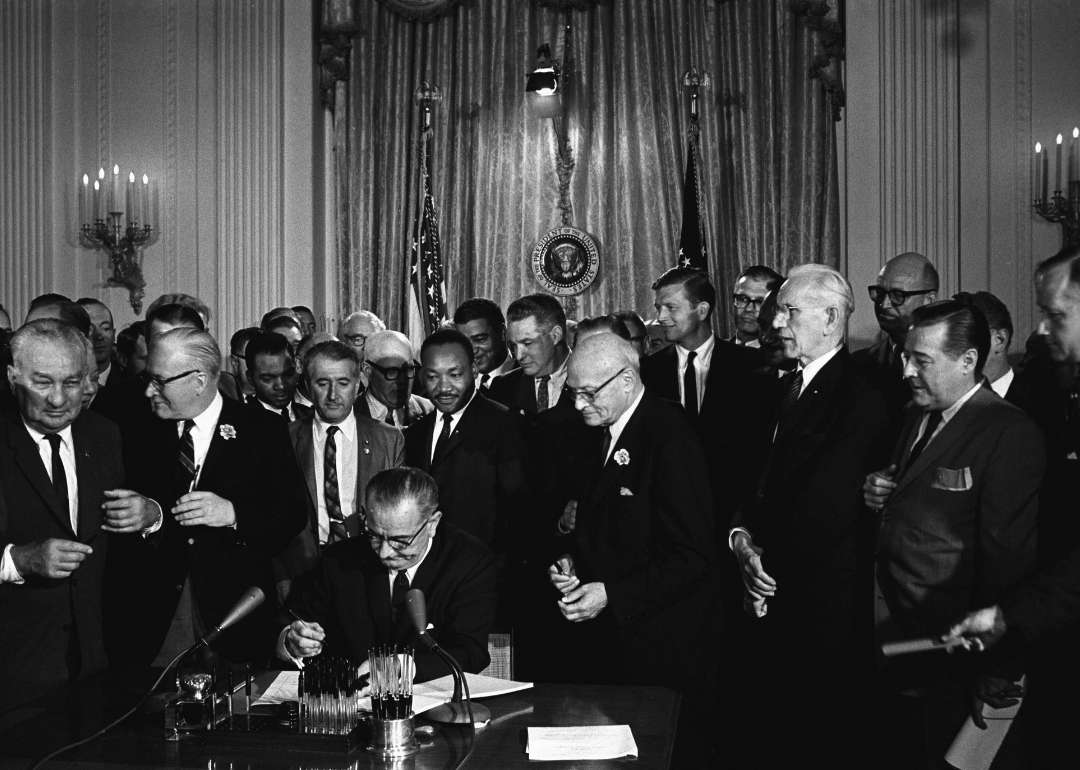
Universal History Archive // Getty Images
1964: Civil Rights Act bans racial and gender-based discrimination against college applicants
Lyndon Johnson signing the1964 Civil Rights Act
In the early 1960s, young Black Americans began attending previously segregated universities, often with the help of federal court rulings. In 1961, a federal district court ordered the University of Georgia to admit two Black students, Hamilton Holmes and Charlayne Hunter, who were suspended after a riot but later reinstated. The following year, a federal appeals court ordered the University of Mississippi to admit an African American student, James Meredith.
In 1963, two African American students, Vivian Malone and James A. Hood, registered at the University of Alabama, the last Southern state university to desegregate. They defied Alabama Gov. George Wallace with the help of President John F. Kennedy, who federalized the state’s National Guard.
The Civil Rights Acts of 1964 made it illegal to discriminate based on race, color, or national origin in a program or activity that receives federal financial assistance, including 4,700 colleges and universities.
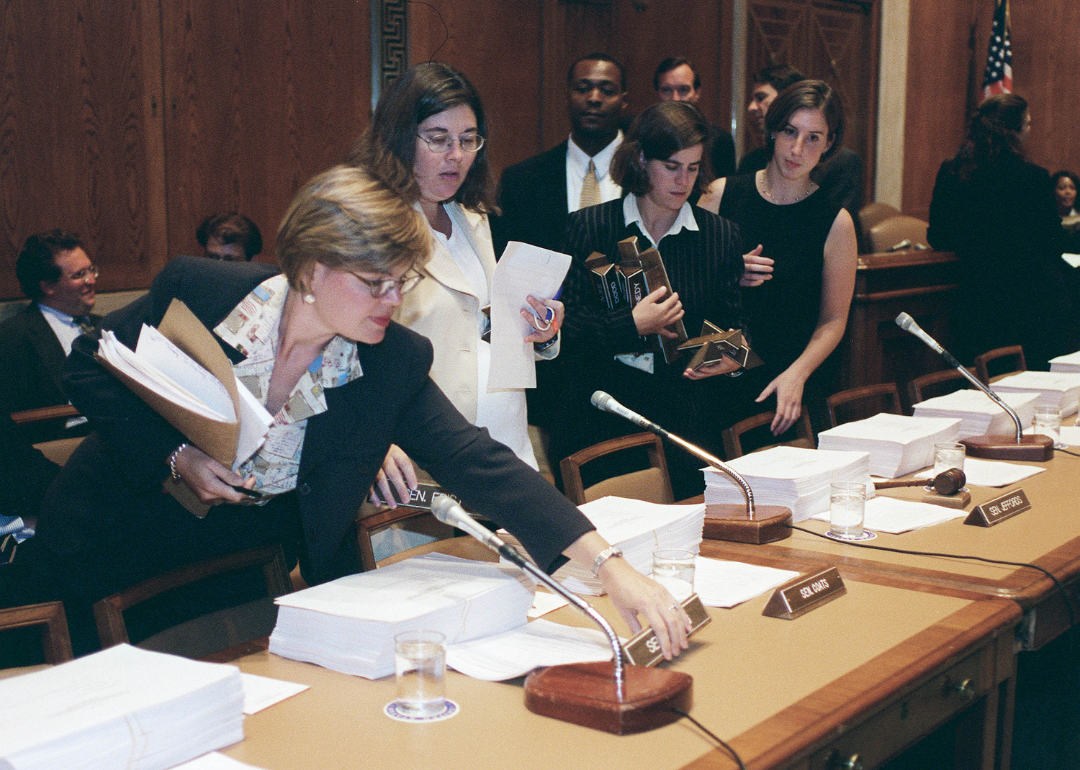
Scott J. Ferrell // Getty Images
1965: Higher Education Act provides additional financial aid opportunities
A staffer for Sen. Dan Coats, R-Ind., distributing name plates on the table in preparation for the joint conference committee meeting on the 1965: Higher Education Act
Among the purposes of the Higher Education Act of 1965 is to provide financial assistance for students in higher education. It oversees student-aid programs, federal aid to colleges, and teacher preparation programs. Congress typically reauthorizes the act every five years to accommodate necessary changes. Most recently, it expired in 2013 but has been extended while Congress discussed changes.
Major changes to federal student aid became law in December 2020 as part of the omnibus spending bill for the 2021 fiscal year. Changes included in the legislation include allowing students who are currently incarcerated to be eligible for Pell Grants and repealing limits on subsidized loan eligibility over a student’s lifetime.

Star Tribune // Getty Images
1972: Title IX is implemented to stem gender-based discrimination
Protesters raising signs in support of Title IX
Title IX of the Education Amendments specifically forbids discrimination on the basis of gender. It applies to education programs or activities that are awarded federal financial assistance. Those include more than 5,000 postsecondary institutions, according to the Department of Education. It was passed by Congress in 1972 and signed by President Richard Nixon. Before then, women faced quotas for admittance at elite colleges and universities or were prohibited from attending. Schools that did accept applications from women often required that they earn higher test scores and grades. Under Title IX, schools must also work to prevent sexual harassment and respond when it occurs.

Tero Vesalainen // Shutterstock
1975: The Common App is created
Man completing a college application
The Common App grew out of an effort to simplify the college application process. Initially, 15 institutions of higher education took part. Today, the Common App is a nonprofit membership organization representing more than 900 schools. The Common App allows students to apply easily to multiple schools at once. This makes it so that students will need to complete information that all schools require—extracurricular activities, for example—only once.
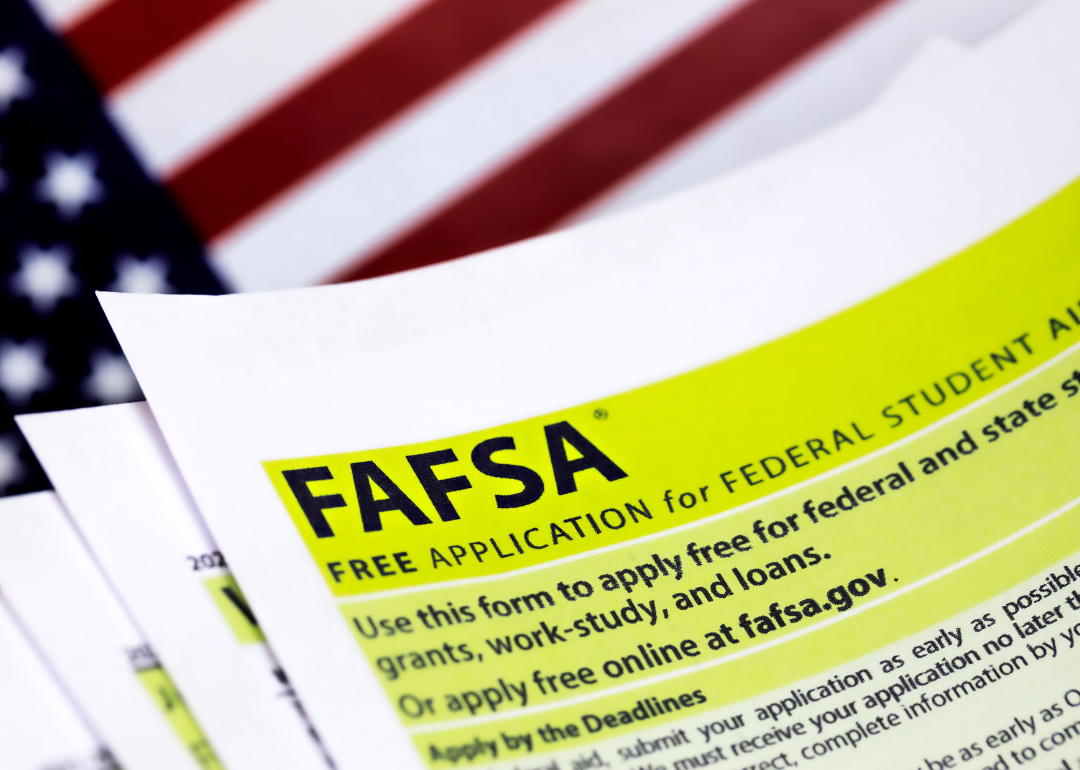
photo_gonzo // Shutterstock
1992: The FAFSA is created
A FAFSA application
The FAFSA, or Free Application for Federal Student Aid, must be completed to apply for federal grants, work-study programs, and loans. It was created by Congress as part of the Higher Education Amendments of 1992 and was meant to standardize the process of applying for federal aid. But critics argue that it is too complicated and that, in fact, schools routinely award scholarships to wealthier applicants, forcing poorer students to take on more loans.
The form also is used by many states and colleges to determine eligibility for state and school aid, and by some private financial aid providers. It asks for information about a student’s finances and those of their family, including tax returns.
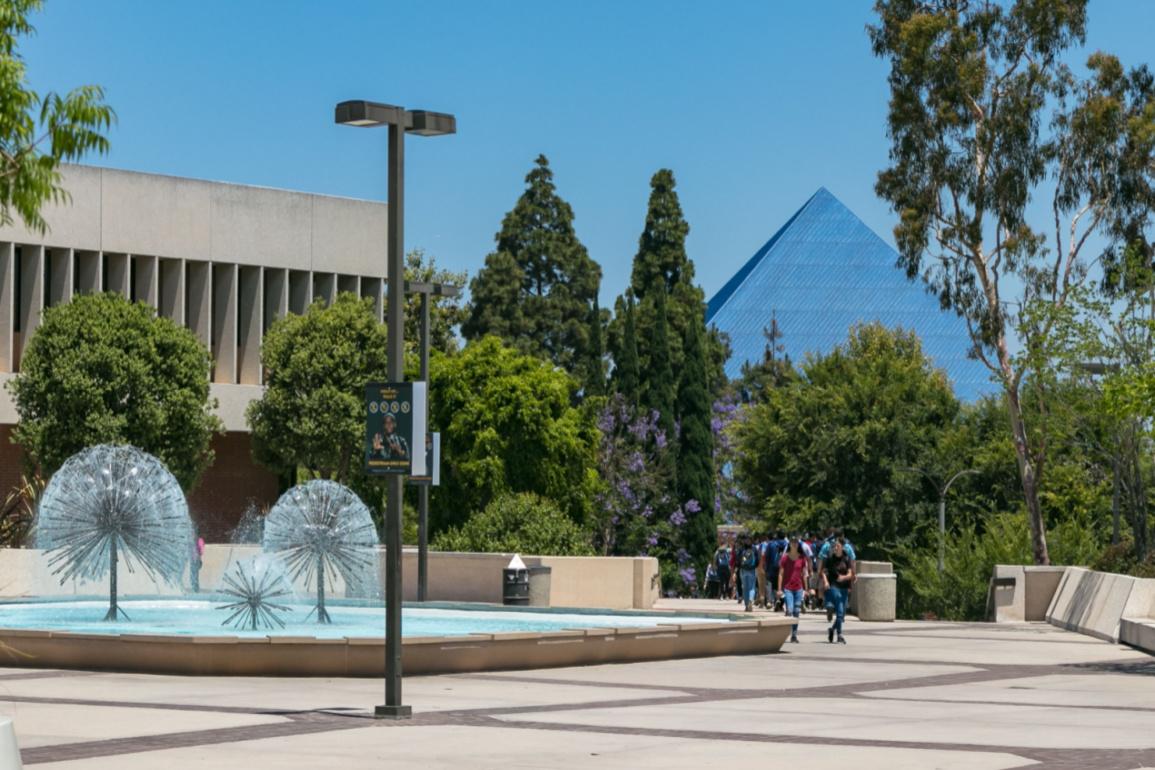
Benjamin Clapp // Shutterstock
Present: Schools begin to eliminate SAT/ACT as entry requirements
Students congregate by the fountains outside of the University of California, Long Beach.
More than 1,800 colleges and universities have eliminated the SAT or ACT from their admissions requirements as of May 15, 2022, according to the National Center for Fair and Open Testing. In March 2022, the California State University network, the country’s largest state university system with 23 campuses and seven off-campus centers, decided it would no longer require the tests. Those in favor of doing away with the tests say that they are poor predictors of a student’s success, that wealthier students tend to score better due to more test prep resources, and that they are racially biased.
The infamous college admissions bribery scandal of 2019—in which wealthy California parents helped their children cheat on the tests and even paid to influence admissions decisions at prestigious U.S. universities—has added impetus to the change. The College Board and the ACT has since responded that their tests are objective.



